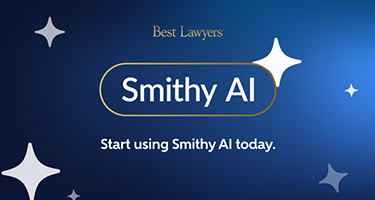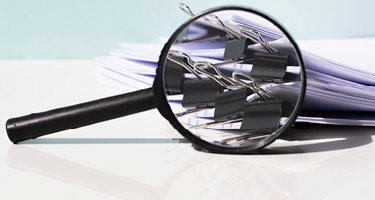Whether you start a legal writing project by staring at the blinking cursor on a blank screen or tapping your pen on an empty legal pad, you’ve surely experienced the universal challenge of getting the thought process, so clear in your mind, into a document that will win the day thanks to its logical organization, clarity and persuasiveness.
What’s true across the board is that good writing skills are the key to effective communication that leads to a successful outcome—and that bad writing can lose an otherwise good case. Let’s look at some important tools of the trade that will help you meet the challenge and craft a winning document.
Develop a strong and useful introduction. Studies show that most people form a first impression of others within a mere seven seconds. Some experiments have gone further to suggest that people can make accurate judgments of others within a tenth of a second. Perhaps more significantly, these quick first impressions are often long-lasting, and it may be extremely difficult—perhaps sometimes impossible—to overcome a less-than-stellar initial performance.
The importance of making a good first impression applies equally to all the legal writing you do. You have control over the impression you make, with an eye to establishing instant credibility and rapport with the court. Do not miss this key opportunity by ignoring the importance of a strong and useful introduction to your document. The opening paragraphs are your first chance to connect with your reader; use them wisely to develop a theme and set the stage for what’s to come. Although we all enjoy a good mystery novel, a court pleading should not be a whodunit—indeed, leaving your most important points until the end and keeping the court guessing as to the outcome is one of the easiest ways to make a poor first impression.
Instead, use the first few paragraphs to clearly roadmap your case, succinctly explaining what is at issue, what you want the court to do and why the law supports you. This is the place to pique the reader’s interest in learning more about the matter while also instilling confidence that you have mastered both the relevant facts and the controlling law to support the requested outcome. Starting out on the wrong foot may leave a negative impression that’s hard to shake.
Keep your arguments organized. Your goal is to make it as easy as possible for the reader to understand your arguments and to show that you have ample support for the outcome you seek. A key component of this plan is to organize your arguments logically.
Think back to your legal writing classes in law school, when you first heard about a writing structure called “CRAC”: conclusion, rule, application, conclusion. This format is the bedrock of persuasive writing, and you should follow it to ensure an orderly sequence of points: laying out the issue to be addressed and the conclusion you want the court to reach; a statement of the legal rules relevant to the issue; an analysis of the pertinent facts based on those rules; and a summary of the overall conclusion. This approach helps your reader easily understand the pertinent issues and how they should be resolved.
"Studies show that most people form a first impression of others within a mere seven seconds."
When a document addresses several issues at greater length, developing an outline is particularly helpful to keep your thoughts moving forward in a structured way. Also, using headings and subheadings orients the reader throughout the argument, continuing the roadmapping that began in the introduction. All these pieces work together to guide your reader effortlessly from point A to point B and, ultimately, to the result you’re going for.
Be clear and concise. Often, when we think of legal documents, archaic words such as whereof, hereunto and hereinbefore come to mind. Banish such dusty verbiage forever from your writing and avoid any kind of legalese: Such stuffy and stilted writing is a surefire way to lose the reader’s attention from the get-go.
Short and concise sentences written in the active voice keep the presentation interesting and tell your client’s story in a way that makes the reader want to keep going. Long, convoluted sentences lose the reader, fail to convey your thoughts correctly and give the impression that you lack mastery over your case—all of which dent your credibility.
Also, ensure that transitions between paragraphs—as well as between arguments—are smooth. Choppiness in your draft hurts its persuasiveness and leaves the reader needlessly wondering how all the pieces fit together.
Remember, too, that a longer document does not translate into a better document; usually the opposite is true. Longer documents have a greater chance of losing the reader before you’ve made your key points. In such instances, less really is more.
Remember as well that the court has a finite amount of time to read, analyze and digest your material; make the most of that time by getting to the point and explaining the bottom line without making it guess what you want.
Edit, edit, edit! The oft-repeated maxim “I didn’t have time to write a short letter, so I wrote a long one instead” captures perfectly the challenge faced by legal writers: to keep their prose clear, concise and to the point while also staying within the timeframe allowed for the project.
Let’s face it: Editing takes time, and an effective writer budgets an editing period into the overall project timeline. Your first draft should never be your last draft; you must edit your material, perhaps a few times, before you reach the final product. The best editing occurs after you’ve had an opportunity to step away from the document and then return to it with a new perspective and a fresh set of eyes. Often, this reveals other, more effective ways to present your arguments; it might also lead you to a rewrite or two of certain sections, or even the entire document.
When editing your draft, do not become so emotionally attached to an argument or phrase that you fail to delete it if it doesn’t further your message. Your goal is to eliminate any weak points that will detract from the rest of your argument, while streamlining and tightening your strongest ones.
Give special attention as well to editing factual discussions. Eliminate any irrelevant facts (including specific dates) if they’re not absolutely necessary; judges may become distracted trying to figure out why you included them. On the flip side, be sure to include any unfavorable facts if they’re necessary. Trying to hide facts that your opponent will surely spotlight is a guaranteed way to lose credibility. Your best bet is to deal with them upfront and argue why they do not sink your case.
Finally, remember our discussion of the importance of first impressions? This applies equally to the visual appearance of your document. The advent of electronic filing means online legal documents are now the norm. With more judges reading documents on screens than on paper, studies show that including more white space is preferable and that headings surrounded by white space can be a favorable visual cue.
Along the same lines, finish your draft by carefully proofreading for careless mistakes. A document with typographical or grammatical errors decreases your credibility and, if such errors pop up in the first few paragraphs, well . . . there goes your good first impression.
In sum, provide a document that is well-organized, easy to read and highly persuasive. This enables the reader to breeze through it, understand your position and, hopefully, agree that yours is the winning side.
Michele M. Jochner is a partner at Schiller DuCanto & Fleck LLP in Chicago, one of the country’s premier matrimonial law firms, where she handles high-asset, complex appellate matters, as well as critical trial pleadings requiring sophisticated analysis, advocacy and drafting. A former law clerk to two Chief Justices of the Illinois Supreme Court, a sought-after speaker and a recognized thought-leader who has penned more than 200 articles, she has been honored as one of the top 50 most influential women in law by the Chicago Daily Law Bulletin and has been recognized in The Best Lawyers in America® since 2015 in Family Law.
































